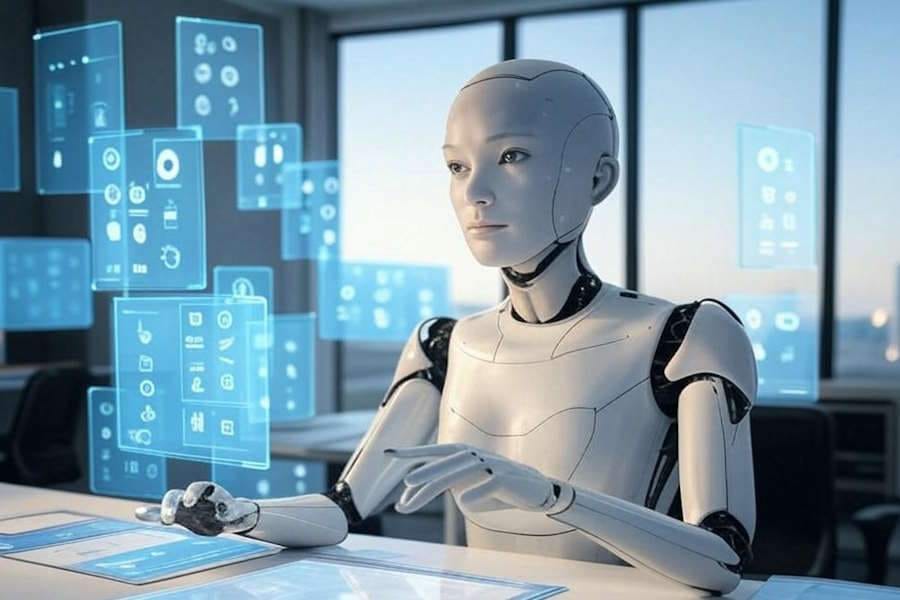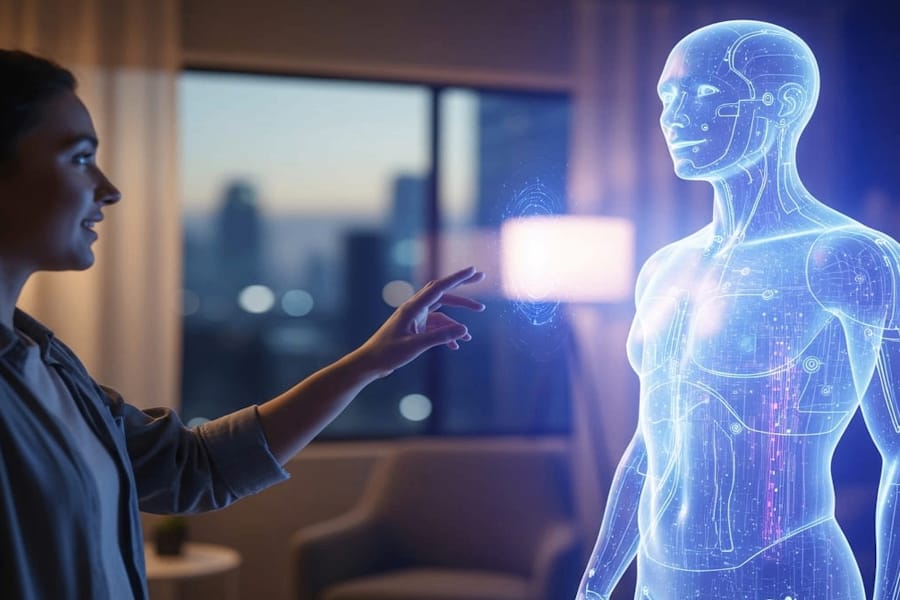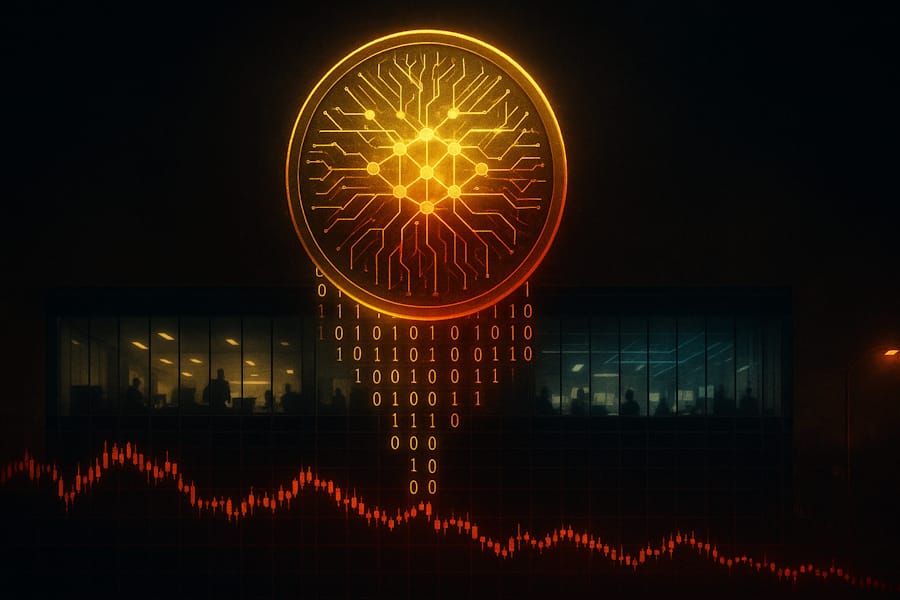The End of Conventional Operating Systems
How AI Will Build Your Perfect, Personalized Tech Experience

Imagine a world where your computer doesn’t come with a rigid operating system like Windows or macOS. Instead, an intelligent AI agent greets you, learns your habits, and designs a custom interface just for you—one that evolves as your needs change. No more navigating clunky menus or installing apps. Your device becomes an extension of your mind, adapting in real time to your goals, preferences, and workflows. This isn’t science fiction—it’s the future of computing, and AI is paving the way. In this article, we’ll explore how AI could make conventional operating systems redundant by creating tailored, dynamic systems that grow with you.
The Limitations of Conventional Operating Systems
For decades, operating systems (OS) like Windows, macOS, and Linux have been the backbone of computing. They manage hardware, provide a user interface, and run applications. But they’re built on outdated paradigms—files, folders, desktops, and app grids—that force users to adapt to the system rather than the other way around. These systems are static, one-size-fits-all solutions in a world that demands personalization and flexibility.
Consider the daily grind: you open a file explorer, hunt for documents, launch apps, and juggle windows. It’s inefficient and unintuitive. Even modern updates like touchscreens or voice assistants are just Band-Aids on a deeper problem: conventional OSes aren’t designed for the fluid, interconnected way we live today. Enter AI—a technology capable of dismantling these rigid structures and replacing them with something far more intelligent and adaptive.
AI as the New Foundation: A Personalized Operating Environment
Instead of a traditional OS, imagine an AI agent as the core of your device. This agent doesn’t just sit on top of an OS like Siri or Alexa—it is the OS, orchestrating hardware, software, and data into a seamless experience tailored to you. Here’s how it could work:
- Custom Interfaces Designed for You: On first boot, the AI engages with you through natural language or simple prompts: “What do you want to do today?” It observes your behavior—how you work, what apps you use, even your mood—and crafts an interface to match. If you’re a coder, it might create a minimalist workspace with a code editor and terminal. If you’re a designer, it conjures a canvas with intuitive touch controls.
- Dynamic Updates Based on Needs: Unlike static OS updates that roll out every few months, an AI-driven system evolves in real time. Start a new project, and it generates tools on the fly. Switch to gaming, and it optimizes for low latency and immersive visuals. The AI learns continuously, tweaking the system as your habits or goals shift—without you lifting a finger.
- Inputs That Adapt to You: Why stick to a keyboard and mouse if you prefer gestures or voice? The AI could design input methods based on your usage. For example, if you frequently edit videos, it might create a gesture-based timeline scrubber. If you’re a writer, it could prioritize voice dictation with real-time transcription. With advancements in brain-computer interfaces (BCI), it might even let you control your device through thought alone.
- No More Apps or Files—Just Results: Forget app stores or file hierarchies. The AI abstracts these entirely. Need to edit a photo? It generates a lightweight editing tool for the task and discards it when you’re done. Want a document? Just ask: “Show me my notes from last week.” The AI pulls the data from a unified knowledge graph, not a folder, delivering exactly what you need in context.
How AI Enables This Transformation
Several AI technologies make this vision possible:
- Natural Language Processing (NLP): Allows the AI to understand your spoken or written requests with nuance, interpreting intent rather than requiring precise commands.
- Machine Learning (ML): Enables the system to learn from your behavior, predicting your needs and refining the interface over time.
- Generative AI: Powers the creation of on-demand tools and interfaces, like generating a custom app or dashboard tailored to a specific task.
- Contextual Awareness: Combines data from sensors, calendars, and past interactions to anticipate your goals—e.g., preloading a presentation before a meeting.
- Edge-Cloud Computing: Seamlessly offloads heavy tasks to the cloud while keeping lightweight operations local, ensuring speed and efficiency on any device.
The Benefits of an AI-Driven System
This paradigm shift offers transformative advantages:
- Efficiency: No more hunting through menus or learning new software. The AI delivers what you need, when you need it.
- Accessibility: A system that adapts to your physical abilities or preferences—like voice control for those with motor impairments—makes tech inclusive.
- Scalability: From a smartwatch to a workstation, the AI ensures a consistent experience across devices, scaling interfaces to fit hardware constraints.
- Sustainability: By optimizing resources and reducing bloat (no unused apps or redundant updates), an AI-driven system could lower energy consumption.
Challenges to Overcome
Of course, this vision isn’t without hurdles:
- Complexity: Building an AI capable of replacing an OS requires monumental engineering. It must handle low-level hardware tasks while delivering a high-level user experience.
- Privacy: An AI that knows your every move could be a double-edged sword. Robust encryption and user-controlled data policies will be critical.
- Reliability: If the AI misinterprets your needs or crashes, it could disrupt your workflow. Redundancies and fail-safes will be essential.
- Transition: Moving from conventional OSes to AI-driven systems will take time. Hybrid solutions—where AI augments existing OSes—might bridge the gap.
The Future: A World Without Conventional OSes
Picture this: You wake up, and your wearable device, powered by an AI agent, briefs you on your day. As you commute, it transitions your tasks to your car’s dashboard, prioritizing voice controls for safety. At work, your laptop conjures a workspace for your project, pulling data from the cloud and local storage seamlessly. Later, your TV becomes a gaming hub, with a custom controller interface on your phone. There’s no “OS” in the traditional sense—just an AI that molds tech around your life.
This future isn’t far off. Companies like Google (with DeepMind) and OpenAI are already exploring AI systems that adapt dynamically to users. As hardware improves and AI models become more efficient, the leap from static OSes to personalized, AI-driven environments feels inevitable.
Conclusion: Embrace the Evolution
Conventional operating systems have served us well, but they’re relics of a pre-AI era. As artificial intelligence matures, it’s poised to redefine computing—not by improving OSes, but by replacing them with something better: a living, breathing system that grows with you. The question isn’t if this will happen, but when—and whether we’ll embrace it or cling to the past. What do you think your perfect AI-designed system would look like?
Latest AI Articles
AI Questions and Answers section for The End of Conventional Operating Systems
Welcome to a new feature where you can interact with our AI called Jeannie. You can ask her anything relating to this article. If this feature is available, you should see a small genie lamp above this text. Click on the lamp to start a chat or view the following questions that Jeannie has answered relating to The End of Conventional Operating Systems.
Be the first to ask our Jeannie AI a question about this article
Look for the gold latern at the bottom right of your screen and click on it to enable Jeannie AI Chat.










